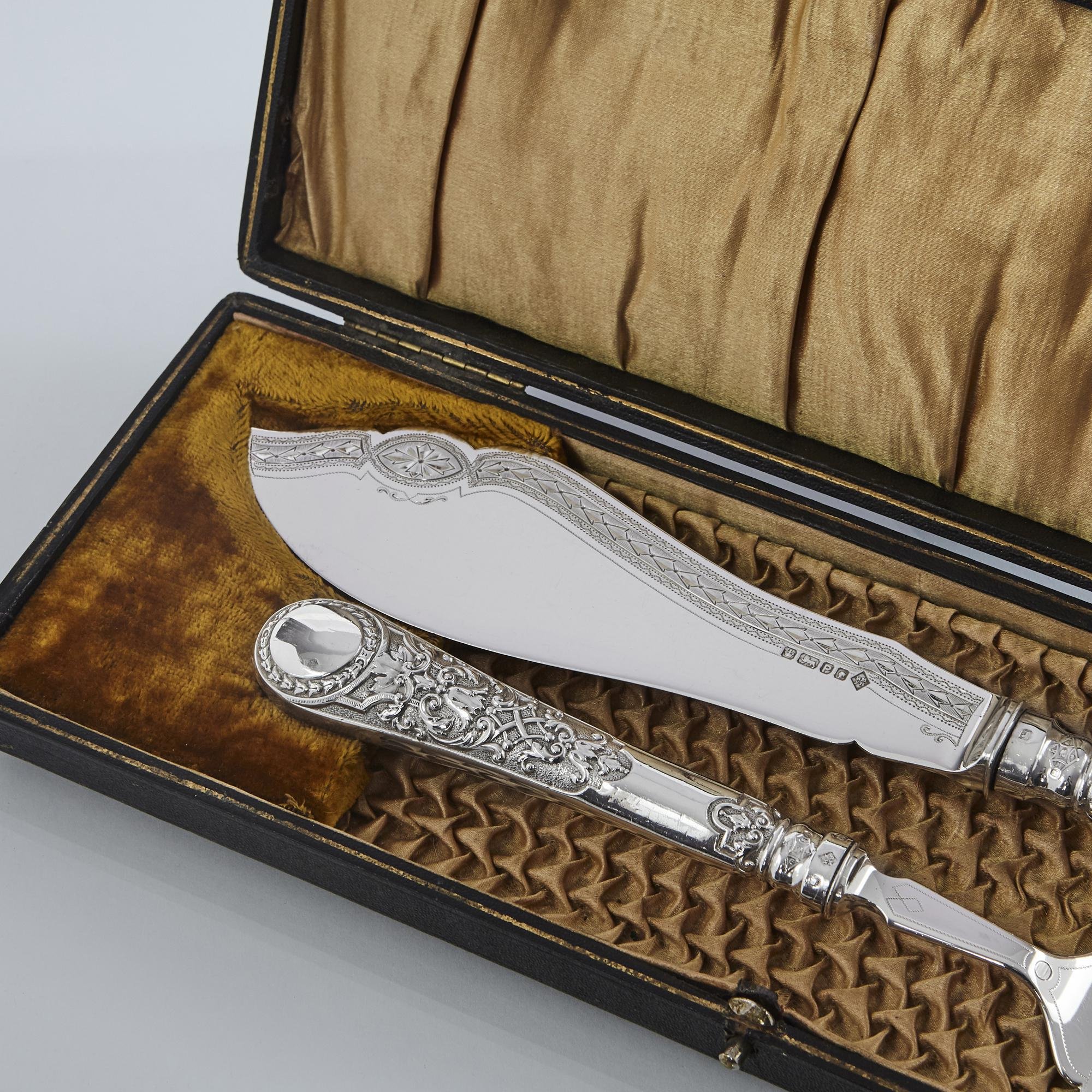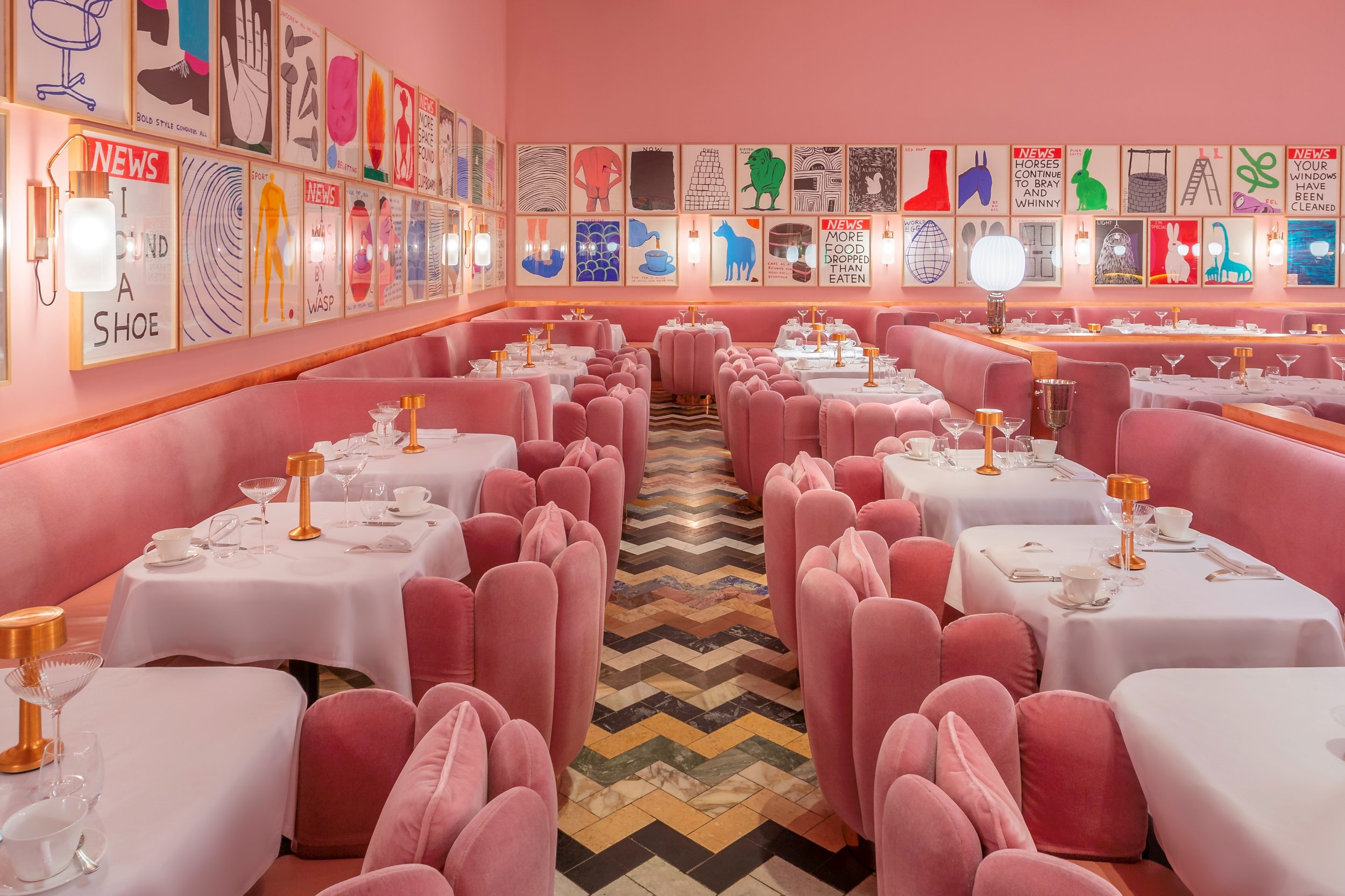Newman Fine Art
As we dream of buzzing city life and travel, we talk to Derek Newman, of Newman Fine Art, about his latest selection of London Highlights from his collection of British watercolours of the 18th, 19th & early 20th centuries. His catalogue is available to browse here.
Hubert James Medlycott (1841-1920), 'Battersea'. Signed, inscribed, watercolour, 8 x 14 inches.
Your business specialises in fine quality British watercolours of the 18th, 19th & early 20th centuries, continuing on from your mother’s business ‘The Heather Newman Gallery’ - did you grow up surrounded by watercolours? What drew you to them?
My late mother started her business in the late 1960s dealing exclusively in what were then referred to as ‘Early English’ watercolours. She had previously been an English scholar at King’s College, London, with a primary interest in English romantic poetry, so there was an obvious crossover to the visual art of British watercolourists of the Romantic Tradition.
In those days and particularly being located in the country, her stock was largely purchased at provincial auctions which she would need to attend in person in order to view what was on offer. I was brought up surrounded by those auction purchases which she enthusiastically returned with, but which I was initially dismissive of. But always artistic, by the mid 1970s I was at art college enthralled by the large paintings of the American Abstract Expressionists, so small scale, limited in colour watercolours were not of immediate appeal to me! But slowly as my eye developed and my prejudices diminished, I became more and more appreciative of the subtlety of watercolour and the tradition of our own artistic heritage and depiction of our landscape, so much so that I eventually entered into formal partnership with my mother in 1986.
This selection of London highlights is a wonderful opportunity for armchair travelling for those of us outside the city, and they all depict either boats or carriages, inspiring a sense of travel and movement while we are all stuck at home. Did you choose this selection for this reason?
Last year, I was an exhibitor at The Open Art Fair in London, which had to be so unfortunately curtailed due to the onset of the first Covid lockdown, so I thought I’d take the opportunity in lieu of its further cancellation this March to display on my website a selection of watercolours that I would have exhibited at the fair, headed up by a selection of London views and particularly some of Chelsea where the fair is located which provides an obvious reference point.
Arthur Severn was associated with both John Ruskin and James Abbott McNeill Whistler - how did he respond to these two very different artists, who had such a public fight over the meaning and value of art? Can you tell us about Severn’s work ‘Old Chelsea Church from Cadogan Pier’?
Joseph Arthur Palliser Severn RI (1842-1931), 'Old Chelsea Church from Cadogan Pier'. Signed, dated 1871, inscribed on label verso, watercolour, 4.75 x 6.75 inches.
The Arthur Severn view of ‘Old Chelsea Church from Cadogan Pier’ is an absolute ‘jewel’ of a watercolour, both in size and presentation in its original ornate frame with gold mount, which was used to enhance and reflect candle or gas light in the home prior to the invention of electricity. This original watercolour is very similar in subject to ‘Old Cheyne Walk’ an etching that was commissioned by ‘The Art Journal’ and published in 1882.
In 1871 (the date of my watercolour), Arthur Severn married Joan Agnew, the niece of John Ruskin. Ruskin (1819-1900) was the most influential English art critic of the century. He promoted the concept of beauty for its own sake and believed the artist should assume the role of both prophet and teacher. It is generally held that Arthur Severn was influenced by Ruskin's philosophy and indeed the artist travelled with him to Italy in 1872. Yet when Ruskin's criticisms of the modernist art of J. M. Whistler and Whistler's counter-attacks upon the writings of Ruskin resulted in the 1878 Ruskin-Whistler trial, Arthur Severn considered Ruskin's comments to be unjust and hence defended Whistler's paintings and etchings; his Chelsea views are in fact quite 'Whistlerian' in both subject matter and technique.
J. Lang - 19th Century, The Monarch's arrival at Temple Bar. Signed verso and dated 1872, watercolour, 11 x 17 inches.
J. Lang’s ‘The Monarchs Arrival at Temple Bar’ depicts a now-defunct ceremony at which the monarch would stop before entering the City of London, receiving the Sword of State from the Lord Mayor. Why do you think the artist chose this scene?
The watercolour by J. Lang is interesting for a number of reasons. Although the skill in draughtsmanship and execution is excellent, the artist is completely unknown – my only knowledge of the hand is that it is inscribed with that name and dated 1872 verso. But the subject is both historically and topographically fascinating as Sir Christopher Wren’s Temple Bar is the only surviving gateway to the City of London, where it once stood at the junction where the Strand meets Fleet Street for more than 200 years which is now known as the area regarded as ‘Legal London’. Wren’s inclusion of the royal statues of Charles I & II was a statement that Temple Bar was as much a regal monument as a commercial one.
The watercolour here depicts Queen Victoria’s arrival at Temple Bar in 1872 when it was ceremonial to stop and request permission to enter the city and for the Lord Mayor to offer the Sword of State as a token of loyalty; Victoria was the last monarch to enter the city through the arch in 1878 where after the City of London Corporation had it dismantled as they wanted to widen the road to relieve traffic congestion. After being reassembled in Cheshunt, Hertfordshire by the then buyer, the gates of the arch are now located at the entrance to Paternoster Square by St. Paul’s Cathedral.
Bertram Nicholls PRBA (1883-1974), 'County Hall, Westminster'. Signed, dated 1955, watercolour, 13.75 x 18.5 inches. Provenance: The Fine Art Society, 1958.
Bertram Nicholls’ ‘County Hall’ shows a building of historical significance on the South Bank of the Thames, with its distinctive curved colonnade. The colour palate here is very atmospheric; can you tell us about this?
Bertram Nicholls first began his studies in his twenties under the Mancunian portrait artist Reginald Barber, at the Slade. Nicholls rejected the modernism of his generation of students, later remarking that it took a number of years to unlearn the principles he learnt at Art School. It was only after 1904 that Nicholls created the serene, tonal landscapes for which he is known which were strongly influenced by the innovative technique of John Sell Cotman (1782-1842) who produced flat planes of tonal colour with effective placement of light and dark forms within a composition through a subdued but carefully balanced colour scheme - as is evident in this striking example by Nicholls of ‘County Hall, Westminster’, the well known Thameside landmark.
English School - circa 1850, 'Thames from Greenwich’. Inscribed verso, watercolour, 4 x 7 inches. Provenance: Heather Newman.
Do you have any advice for new collectors? Any common pitfalls to avoid or strategies to employ?
‘Look before you leap’ is the best advice I can offer, by which I mean take time to consider what it is that attracts you and why. Develop your eye and talk to specialist dealers who will be able to explain why one artist is more ‘significant’ than another, differences in technique, provenance etc. Of course you can buy direct at auction, but before you do ensure you are confident you know exactly what you are doing, especially if a decision to purchase is based solely on an online photo. Take account of all additional fees and ensure you know a good conservator and framer as may be required. Such additional costs are often overlooked in comparison to purchasing from a dealer where you can view and discuss a potential purchase before committing. In our increasingly internet dominated world, sometimes a personal interaction can be invaluable in terms of both guidance and confidence.









